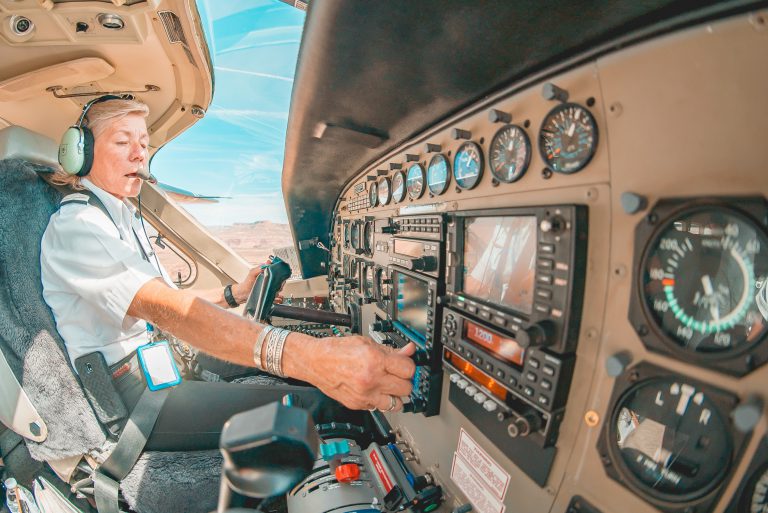Imagine being a relatively new pilot showing up at your local FBO, which offers aircraft for rent. You can sign out a Cessna 172, Cessna 182, Diamond DA40XL or maybe a Piper Arrow, and you are excited to start exercising the privileges of your newly minted FAA Certificate. You spent an immense amount of time studying, completing your written, accomplishing a solo flight and then building the appropriate amount of time to finish your private pilot’s license. Since passing your check-ride, let’s assume you have managed to build up a few hundred hours of flight time and are looking forward to building even more time by renting aircraft at your local FBO.

You get all the information you need and complete the written, check-rides or other requirements necessary to begin renting aircraft from the FBO (BTW – we recommend Renter’s Insurance at this point). Now it’s time to go fly! The next day you show up for a short cross country and begin pre-flighting the aircraft. All checks are good and you taxi, take-off and have an uneventful flight until you reach the Class C airspace at your destination. When you check in with approach, they let you know that they are showing a discrepancy in the altitude you are indicating by three hundred feet. There is seemingly no reason for this to occur, and you adjust your flight altitude accordingly for the flight back home.
After landing back at your base, you report the discrepancy and begin discussing the issue. As everyone begins researching the issue, someone notices that a discrepancy had been written in the notes of a previous flight, but had evidently not been noticed or could not be repeated on the ground. Further research shows that the required Transponder and Altimeter check is overdue by 40 days!
While I have added to this story to stress a point, I have had very similar experiences flying rented aircraft in the past. Most FBOs and other organizations do an outstanding job tracking and resolving discrepancies on their aircraft, but most are still relying on a dated paper shuffle that can easily lead to misses and gaps in communication. One of the reasons we have developed Coflyt is to assure that there is a streamlined communications platform that will assist organizations of all sizes managing their aircraft. However, in addition to the question of aircraft management, there is also the question of responsibility. Who is actually responsible for this aircraft in flight, and who is responsible for the altitude discrepancy discovered upon check-in with ATC?
This question is answered with absolute clarity within the FARs, and it might surprise you:
“Sec. 91.3
Responsibility and authority of the pilot in command.
(a) The pilot in command of an aircraft is directly responsible for, and is the final authority as to, the operation of that aircraft.”
For additional clarity, we can read a little bit further:
“Sec. 91.7
Civil aircraft airworthiness.
(a) No person may operate a civil aircraft unless it is in an airworthy condition.
(b) The pilot in command of a civil aircraft is responsible for determining whether that aircraft is in condition for safe flight. The pilot in command shall discontinue the flight when unairworthy mechanical, electrical, or structural conditions occur.”
There is no doubt that once you sign for an aircraft and begin taxiing out, it is your responsibility to assure airworthiness. The first time I rented an aircraft was after I had left the Marine Corps, after building 1600 hours of flight time. I was proficient in the air, with both a Commercial Helicopter and Fixed Wing Instrument rating. I was also very familiar with the applicable FAR-AIM requirements for flight operations in most any environment. But, my awareness of the requirements and responsibilities of renting, owning or operating an aircraft under part 91 was apparently lacking. Many pilots understand their responsibilities as pilot in command, but many do not understand their responsibilities for airworthiness.
While we would like to completely trust a Flight Club, Flight School, FBO or individual owner to have met the requirements of airworthiness, you may want to consider your responsibilities the next time you are in this position. Most of the time you are going to be just fine, but how can you be sure? How do you know the ELT check, Annual, Registration and other requirements – such as AD Inspections – have been met? The only way you can be absolutely sure is to ask and see that the relevant dates for each have been recorded appropriately. In most cases, this information is only available via the aircraft log books, which may not be onsite.
Aircraft managed with Coflyt provide visibility to all parties involved – owners, renters, instructors, etc. Each requirement associated with the aircraft can be easily recorded and communicated across all potential users, so that there is no confusion on the status of inspections or maintenance items. Our goal is to solve concerns of pilot in command responsibility by providing the tools you need for #PilotPeaceofMind!

